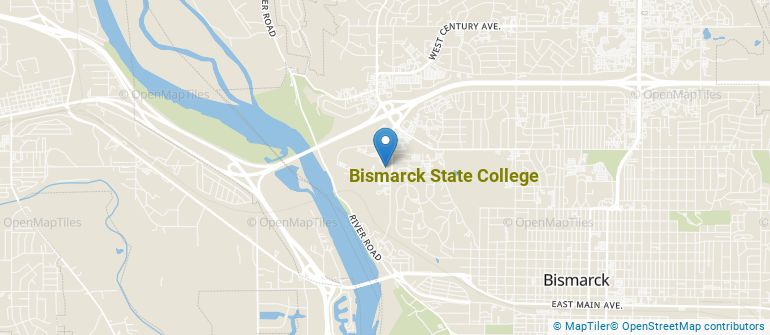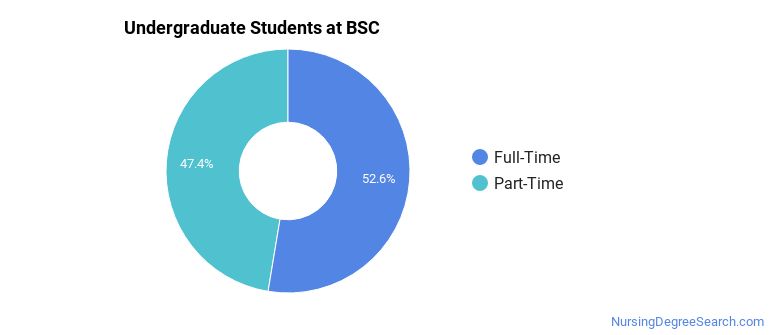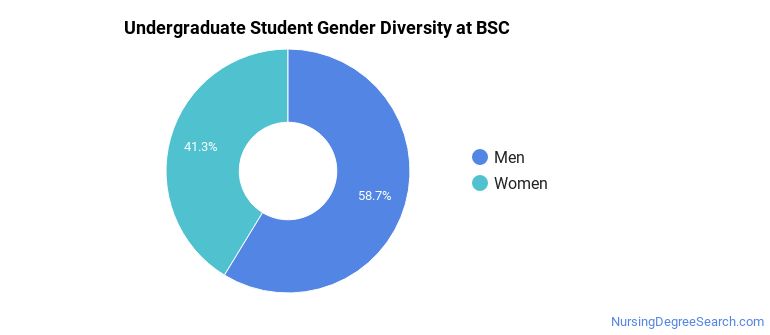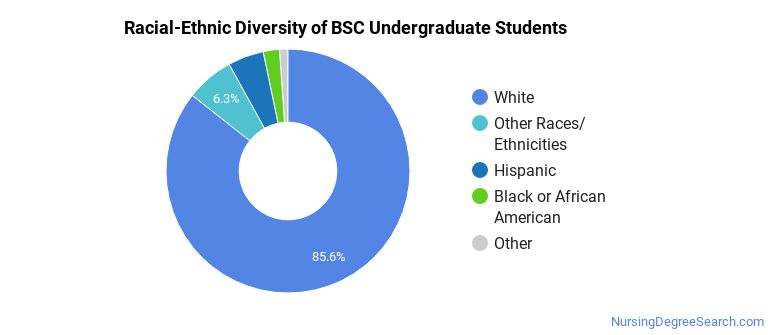Bismarck State College Nursing Programs
Located in Bismarck, North Dakota, Bismarck State College is a public institution. The city atmosphere of Bismarck makes it a great place for students who enjoy having lots of educational and entertainment options.
Where Is Bismarck State College?

Contact details for BSC are given below.
| Contact Details | |
|---|---|
| Address: | 1500 Edwards Ave., Bismarck, ND 58506-5587 |
| Phone: | 701-224-5400 |
| Website: | bismarckstate.edu |
How Do I Get Into BSC?
You can apply to BSC online at: https://bismarckstate.edu/admissions/howtoapply/
Can I Afford Bismarck State College?
Student Loan Debt
It's not uncommon for college students to take out loans to pay for school. In fact, almost 66% of students nationwide depend at least partially on loans. At BSC, approximately 47% of students took out student loans averaging $6,902 a year. That adds up to $27,608 over four years for those students.
Bismarck State College Undergraduate Student Diversity

Gender Diversity
Of the 1,955 full-time undergraduates at BSC, 59% are male and 41% are female.

Racial-Ethnic Diversity
The racial-ethnic breakdown of Bismarck State College students is as follows.

| Race/Ethnicity | Number of Grads |
|---|---|
| Asian | 17 |
| Black or African American | 42 |
| Hispanic or Latino | 93 |
| White | 1,674 |
| International Students | 5 |
| Other Races/Ethnicities | 124 |
Geographic Diversity
North Dakota students aren't the only ones who study at Bismarck State College. At this time, 20 states are represented by the student population at the school.
Over 7 countries are represented at BSC. The most popular countries sending students to the school are Nigeria, Bahamas, and Philippines.
Bismarck State College Nursing Concentrations
The table below shows the number of awards for each concentration.
| Major | Associate’s | Undergraduate Certificate | TOTAL |
|---|---|---|---|
| Registered Nursing | 42 | 0 | 42 |
| Licensed Practical/Vocational Nurse Training | 0 | 38 | 38 |
| TOTAL | 42 | 38 | 80 |
References
*The racial-ethnic minorities count is calculated by taking the total number of students and subtracting white students, international students, and students whose race/ethnicity was unknown. This number is then divided by the total number of students at the school to obtain the racial-ethnic minorities percentage.
More about our data sources and methodologies.
